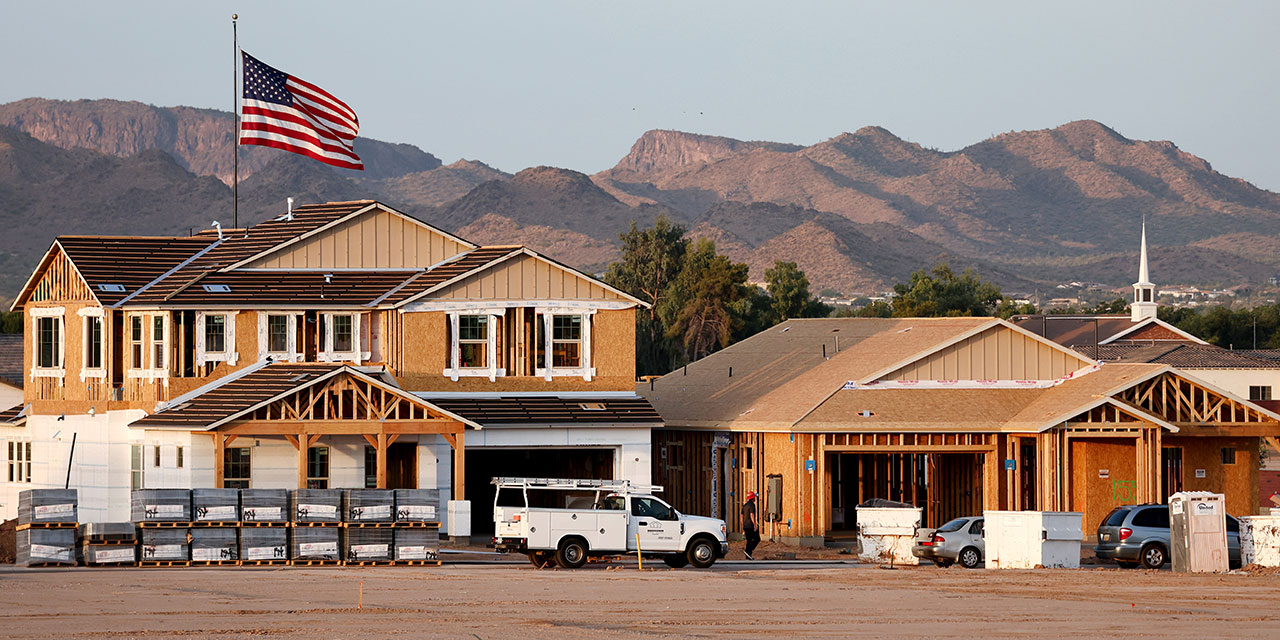
There’s just something about suburbs. Most Americans like them. A resolute minority finds this fact inexplicable and frustrating. Witness the ferocious reaction to Conor Dougherty’s New York Times article arguing that America needs to embrace suburban development to solve the housing crisis.
Nonetheless, the popular view of suburbia is mostly right. Smart outward expansion of growing metropolitan areas, especially in the Sun Belt, is remaking America, and the benefits outweigh the downsides. It’s delivering much-needed housing, creating strong communities where millions are happy to put down roots, and building on America’s rich placemaking history. Moreover, most fast-growing communities today look nothing like the critics’ stereotype of disconnected “sprawl.”
Finally, a reason to check your email.
Sign up for our free newsletter today.
Since 2010, 25 Sun Belt metros from the Carolinas to Arizona have accounted for 41 percent of new single-family homes and 35 percent of new apartments, a George W. Bush Institute–SMU report shows. They’ve grown primarily by expanding their footprint rather than densifying built-up areas. If it weren’t for this expansion, America’s housing shortfall—estimated at between 4 million and 8 million units—would be far larger, and home prices significantly higher.
States and localities could make up a large portion of their housing shortfalls by adopting the Sun Belt formula. Build out infrastructure to support metropolitan expansion; allow starter homes, apartments, and town homes; attract employers to suburban communities; promote mixed-use centers and greenspace; and avoid urban growth boundaries or any policy aimed at forcing people into built-up core cities.
Outward expansion of thriving metros has been a powerful engine of economic growth throughout America’s history. Successful cities must expand, urbanist Jane Jacobs wrote in her book The Death and Life of Great American Cities. More intensive land uses replace older, less intensive ones—ensuring that some activities are always migrating outward. Expansion also provides a pressure valve that keeps U.S. urban homes less expensive than those in more densely populated countries.
Suburban expansion and new city creation, moreover, are forces for renewal. They allow people and businesses to leave behind cities that have grown corrupt and sclerotic. American dynamism has always depended on the fact that, when older cities decline, newer ones rise up to take their place.
Today, the expansion of Sun Belt metros is helping to revitalize many small localities just beyond their periphery whose populations were once in decline. The George W. Bush Institute has identified 288 “liminal cities”—semiurban localities like Jefferson, Georgia, and Gainesville, Texas—benefiting from the rise of exurban job centers in neighboring metros. On average, they’ve seen greater income growth and in-migration than the 60 largest metros since 2010, as many have come to appreciate their job opportunities, affordability, and small-town charm.
Criticism of suburban expansion is often reduced to offering little more than personal opinions on aesthetics or how people should want to live. Who’s to say suburbanites are living in the “wrong housing”? Millions like what they’re seeing and are voting with their feet. Home prices in booming suburbs like Apex, North Carolina, and Frisco, Texas, are comparable with those of Raleigh and Dallas—contrary to the claim that people choose exurbs only because they can’t afford to live closer to the metro center.
The most successful Sun Belt suburbs are becoming fully formed cities in their own right, offering most of the traditional benefits of city living. Suburbs in the Atlanta, Dallas–Fort Worth, and Phoenix metros are building parks, arts and sports facilities, and mixed-use town squares that deliver the walkability and quality of life that were often missing in mid-twentieth-century developments. These communities also offer good schools and public safety—categories where core cities often come up short.
Most large Sun Belt suburbs have daytime working-adult populations that are roughly in line with their nighttime resident populations, meaning they’re significant destinations for commuting workers, as well as being places that many call home. Average commuting times are essentially equivalent to those of neighboring core cities.
More and more Sun Belt boomtowns acknowledge author Charles Marohn’s point that expansion won’t be sustainable if it depends on infrastructure that the tax base can’t support long-term, so they’re planning for medium rather than low density. Frisco already matches Fort Worth’s population per square mile. As for expansion’s environmental effects? Manageable commutes, hybrid work, and electric vehicles will increase sustainability over time.
Some argue that if core cities allowed more housing, growing metros wouldn’t need to expand. Yes, cities should permit homes in commercial areas, liberalize minimum lot sizes, reduce parking requirements, and allow more apartments. But so should growing suburbs, many of which are also over-restrictive. Pro-growth reform everywhere would lead to more land-use mixing and shorter commutes, but many resulting medium-density areas would likely be in growing suburbs rather than core cities.
In any case, big-city reform is unlikely to deliver homes at the scale America needs. Reformers have achieved an impressive string of wins—mostly in red states like Texas and Florida—but evidence suggests that even optimal measures won’t generate more than 5 percent to 10 percent increases in core-city density over the next 20 years. This would help, but it’s a small share of what growing metros need to keep up with population.
The harshest critics favor discouraging expansion through taxes or even banning it with growth boundaries, as Portland, Oregon, has done. Leaving aside the troubling implications of policies telling people where to live, it surely makes sense to see how effective reforms turn out to be before blocking the one avenue that’s delivering homes at large scale today.
Suburban expansion in the Sun Belt is a success story. The rest of America should emulate it.
Photo by Mario Tama/Getty Images
City Journal is a publication of the Manhattan Institute for Policy Research (MI), a leading free-market think tank. Are you interested in supporting the magazine? As a 501(c)(3) nonprofit, donations in support of MI and City Journal are fully tax-deductible as provided by law (EIN #13-2912529).
Source link
















